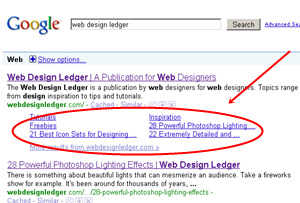One of the most important and least used aspects of any website is the “About Me” page. It’s not enough to have an interesting site and great product if your visitor can’t find a way to relate to you. Never under-estimate the power of personality. The internet isn’t a cold, sterile environment. As a matter of fact, within the last 15 years, it’s developed into a community addicted to interactivity, and communication. If you don’t believe me, check out Twitter. Twitter is a good example of why “About Me” pages are crucial. If you can amass a group of followers based on 140 characters of random biographical chatter, it’s a safe bet that those readers would also like to know a bit more about you.
In this guide, we’ll walk through the most essential aspects of any “About Me” page. At the end, you’ll be totally empowered to make your own page, because we’ll strip away all of your excuses!
1. Answer These Questions:
Who am I?
What can I do for you, the visitor?
How can I be contacted?
What can I do for you, the visitor?
How can I be contacted?

An “About Me” page can be whittled down to these three questions. Visitors want to know briefly who you are, why you decided to make a website, and how they can reach you if they want to hear more.
Who am I? A lot of successful “About Me” pages start off with “Hi, my name is…” Having a personal introduction is a great way to start off. Your “About Me” should come across as if you were talking face to face with your visitor. Although I personally prefer a first person narrative (“I am, We are…”), for corporate or more professional websites, it may be better to go with the third person voice (“Jimbo Designs is…”).
Don’t overwhelm the reader with too much information. Of course they want to know more about you, but it’s safe to leave out details like the name of your high school gym teacher, or the color of your first car. Your “About Me” page should expand on the purpose of your website. If your website is about the wonderful world of Photoshop, your “About Me” page should include how you got started on Photoshop, and briefly skim through your accomplishments.
What can I do for you, the visitor? Put yourself in the visitor’s shoes. The reason they’re clicking your “About Me” page is to relate to you. They want compare notes to see if you and they share the same awesome traits. Let’s face it, if a visitor’s searching for your “About Me” page, that means that you have piqued their curiosity and in some way inspired them to care about who you are. Don’t let them down!
Sometimes visitors will click on your “About Me” page because they want to know about how you can help them. You should always answer this question. To do this, first consider your visitor pool. If potential clients, explain your services. If fellow enthusiasts, share how you first fell in love with your subject matter. If learners, tell them why you’re qualified to make such a website.

How can I be contacted? Some websites have separate “Contact” pages, which is recommended, but you should also include your contact details on your “About Me” page to save the visitor from clicking too many pages. A good idea is to add social media buttons on your “About Me” page. Everyone loves Twitter, and in addition to that, include your Facebook, LinkedIn, Delicious, and Flickr pages. Be careful, though, if you’re including a Facebook identity. We all know how carefree a Facebook identity can be, but if you’re promoting a professional brand, your Facebook profile picture shouldn’t be a questionable image from Spring Break.
In certain websites, it’s a good idea to have a separate “About Me” for you as an individual and one for your website. This especially pertains to websites that aim to help people or sell services.
2. The Photo
 After you’ve tackled the words, it’s time to choose an image that encapsulates your personality. A photograph on your “About Me” page is not optional. It gives the visitor another way to relate to you. And, if you don’t include a photograph of yourself, your “About Me” page will seem incomplete.
After you’ve tackled the words, it’s time to choose an image that encapsulates your personality. A photograph on your “About Me” page is not optional. It gives the visitor another way to relate to you. And, if you don’t include a photograph of yourself, your “About Me” page will seem incomplete. There are several ways you can go with this. Observe:
As you can see in all these examples, an “About Me” photo can range depending on your personality and intended audience. Although tone doesn’t always translate well in words, it’s easy to recognize in pictures. When a visitor sees your image, they can start piecing together a more accurate idea of you.
Another note about the photo is that it should be a photo of your face, not an photo of your right foot, or a random stock image. Privacy is definitely an issue on the internet, but through the process of creating a website, you open yourself up to some sort of transparency. Why not further the bond between you and the visitor by showing them who you are?
3. Highlight Great Posts
The “About Me” page is the perfect place to do some cross-promotion. Often times, after arriving at your home page, a first time visitor’s next click will be to your “About Me” page. Give them a general scope of your website, such as “Must See” or “Most Popular” posts. That’s a sure-fire way to drive more traffic to the posts you’re most proud of. It’s also a comprehensive way to welcome visitors to your site.
4. Create an Indented Listing for you “About Me” Page on Google

This step isn’t as well known as others, but guaranteed to drive more traffic to your site. An indented listing is when a second page from your website is listed directly under your main website on Google’s search page.
The effect is that visitors are more likely to click on your website.
The “About Me” page is the perfect way to create an indented listing under your website. In order to do this, you’ll need to ensure that your website is within the first ten results on Google for a particular keyword. That keyword may be the name of your website, or brand.
Start off by optimizing your “About Me” page with the same keyword from your home page (or whichever page ranks in the top ten results). Next, link your “About Me” to that page. Now, go to the main page (that’s in the top ten results), and create an anchor text that links to your “About Me.” Of course, it also helps if you get inbound links from other sites. So, be sure to leave comments below, and link to your “About Me” page in the website box!
Source http://webdesignledger.com





Comments
Post a Comment